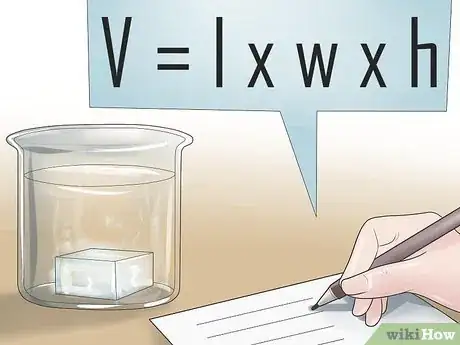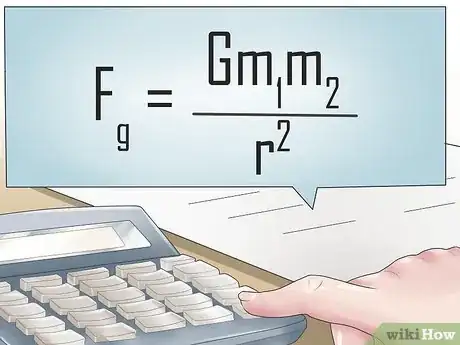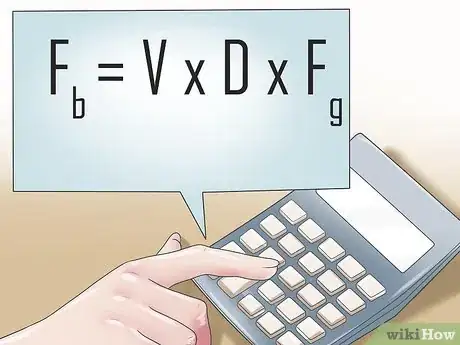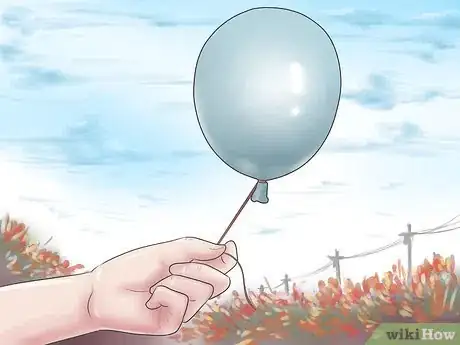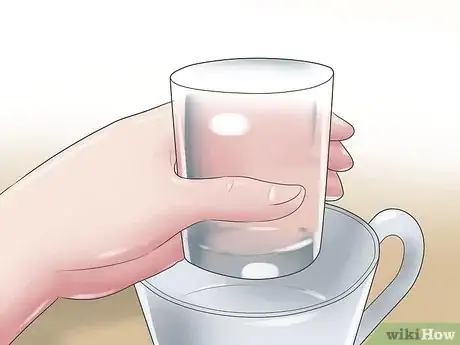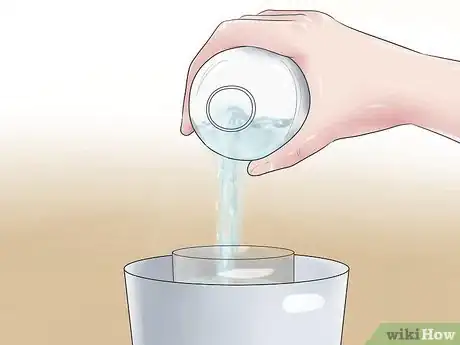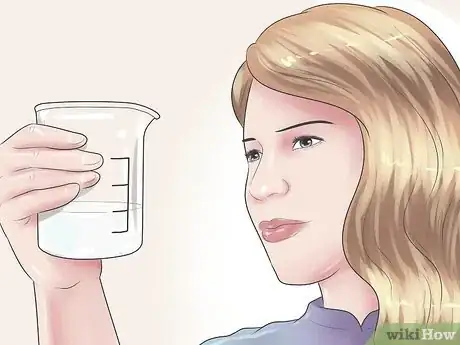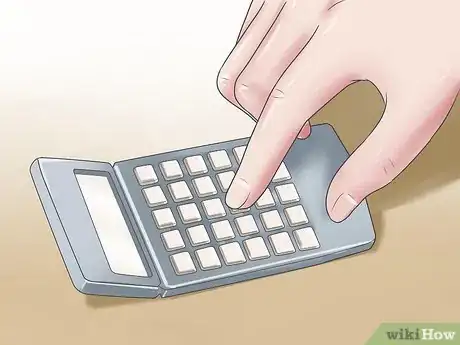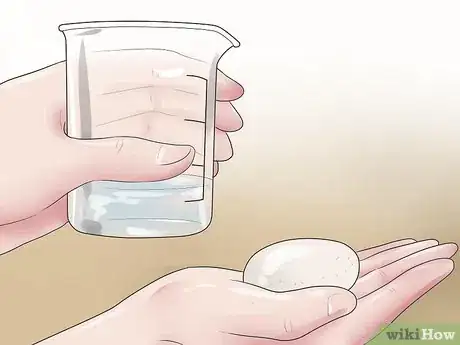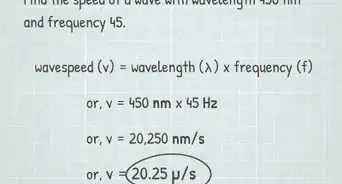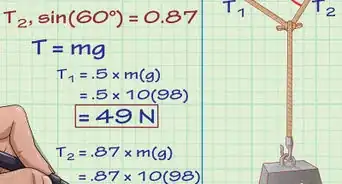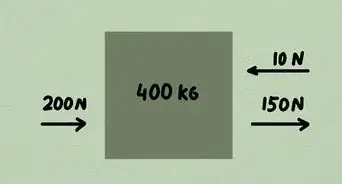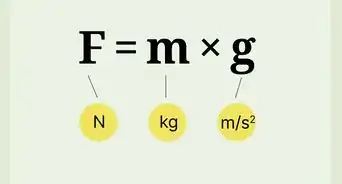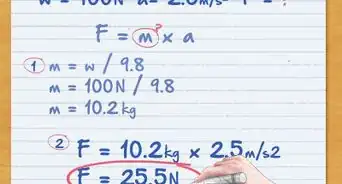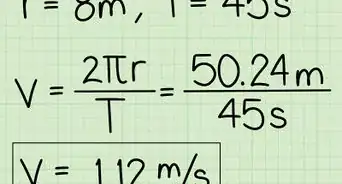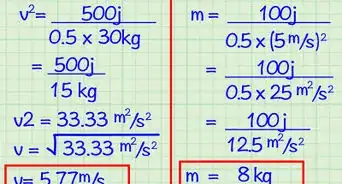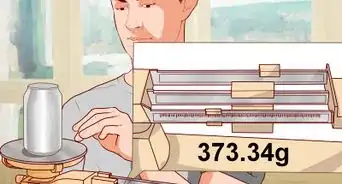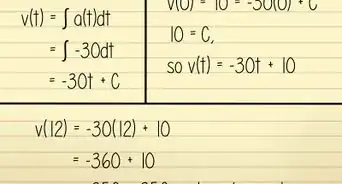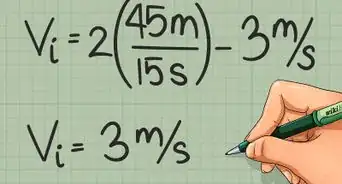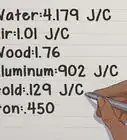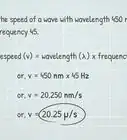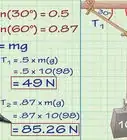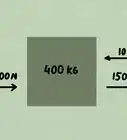This article was co-authored by Bess Ruff, MA. Bess Ruff is a Geography PhD student at Florida State University. She received her MA in Environmental Science and Management from the University of California, Santa Barbara in 2016. She has conducted survey work for marine spatial planning projects in the Caribbean and provided research support as a graduate fellow for the Sustainable Fisheries Group.
wikiHow marks an article as reader-approved once it receives enough positive feedback. In this case, several readers have written to tell us that this article was helpful to them, earning it our reader-approved status.
This article has been viewed 659,933 times.
Buoyancy is the force acting opposite the direction of gravity that affects all objects submerged in a fluid.[1] When an object is placed in a fluid, the object's weight pushes down on the fluid (liquid or gas) while an upward buoyancy force pushes upward on the object, acting against gravity. In general terms, this buoyancy force can be calculated with the equation Fb = Vs × D × g, where Fb is the buoyancy force that is acting on the object, Vs is the submerged volume of the object, D is the density of the fluid the object is submerged in, and g is the force of gravity. To learn how to determine an object's buoyancy, see Step 1 below to get started.
Steps
Using the Buoyancy Force Equation
-
1Find the volume of the submerged portion of the object. The force of buoyancy that acts on an object is directly proportional to the volume of the object that is submerged. In other words, the more of a solid object that is submerged, the greater the force of buoyancy that acts on it. This means that even objects that sink in liquid have a buoyancy force pushing upwards on them.[2] To begin to calculate the buoyancy force acting on an object, your first step should generally be to determine the volume of the object that is submerged in fluid. For the buoyancy force equation, this value should be in meters3.
- For objects that are completely submerged in fluid, the submerged volume will be equal to the volume of the object itself. For objects that are floating on the surface of a fluid, only the volume under the surface of the fluid is considered.
- As an example, let's say that we want to find the buoyancy force acting on a rubber ball floating in water. If the ball is a perfect sphere with a diameter of 1 meter (3.3 ft) and it's floating exactly halfway submerged in the water, we can find the volume of the submerged portion by finding the volume of the entire ball and dividing it in half. Since the volume of a sphere is (4/3)π(radius)3 , we know our ball's volume is (4/3)π(0.5)3 = 0.524 meters3. 0.524/2 = 0.262 meters3 submerged.
-
2Find the density of your fluid. The next step in the process of finding the buoyancy force is to define the density (in kilograms/meter3) of the liquid that the object is submerged in. Density is a measure of an object or substance's weight relative to its volume. Given two objects of equal volume, the object with the higher density will weigh more. As a rule, the higher the density of the fluid an object is submerged in, the greater the force of buoyancy. With fluids, it's generally easiest to determine density simply by looking it up in reference materials.
- In our example, our ball is floating in water. By consulting an academic source, we can find that water has a density of about 1,000 kilograms/meter3.
- The densities of many other common fluids are listed in engineering resources. One such list can be found here.
Advertisement -
3Find the force of gravity (or another downward force). Whether an object sinks or floats in the fluid it's submerged in, it's always subject to the force of gravity. In the real world, this constant downward force is equal to about 9.81 Newtons/kilogram. However, in situations in which another force, like centrifugal force, is acting on the fluid and the object submerged in it, this must also be taken into account to determine the total "downward" force for the entire system.[3]
- In our example, if we're dealing with an ordinary, stationary system, we can assume that the only downward force acting on the fluid and object is the standard force of gravity — 9.81 Newtons/kilogram.
-
4Multiply volume × density × gravity. When you have values for the volume of your object (in meters3), the density of your fluid (in kilograms/meter3), and the force of gravity (or the downward force of your system in Newtons/Kilograms), finding the buoyancy force is easy. Simply multiply these 3 quantities to find the force of buoyancy in newtons.
- Let's solve our example problem by plugging our values into the equation Fb = Vs × D × g. Fb = 0.262 meters3 × 1,000 kilograms/meter3 × 9.81 newtons/kilogram = 2,570 Newtons. The other units cancel each other out and leave you with Newtons.
-
5Find whether your object floats by comparing with its gravity force. Using the buoyancy force equation, it's easy to find the force that's pushing an object up out of the fluid it's submerged in. However, with a little extra work, it's also possible to determine whether the object will float or sink. Simply find the buoyancy force for the entire object (in other words, use its entire volume as Vs), then find the force of gravity pushing it down with the equation G = (mass of object)(9.81 meters/second2). If the force of buoyancy is greater than the force of gravity, the object will float. On the other hand, if the force of gravity is greater, it will sink. If they are equal, the object is said to be neutrally buoyant.
- A neutrally buoyant object will not float up to the surface or sink down to the bottom when it is in water. It will just be suspended in the fluid somewhere between the top and bottom.[4]
- For example, let's say we want to know if a 20 kilogram cylindrical wooden barrel with a diameter of .75 meters (2.5 ft) and a height of 1.25 meters (4.1 ft) will float in water. This will take several steps:
- We can find its volume with the cylindrical volume formula V = π(radius)2(height). V = π(.375)2(1.25) = 0.55 meters3.
- Next, assuming ordinary gravity and water with ordinary density, we can solve for the force of buoyancy on the barrel. 0.55 meters3 × 1000 kilograms/meter3 × 9.81 newtons/kilogram = 5,395.5 Newtons.
- Now, we'll need to find the force of gravity on the barrel. G = (20 kg)(9.81 meters/second2) = 196.2 Newtons. This is much less than the buoyancy force, so the barrel will float.
-
6Use the same approach when your fluid is a gas. When performing buoyancy problems, don't forget that the fluid that the object is submerged in doesn't necessarily have to be a liquid. Gases also count as fluids, and, although they have very low densities compared to other types of matter, can still support the weight of certain objects floating in them.[5] A simple helium balloon is evidence of this. Because the gas in the balloon is less dense than the fluid around it (ordinary air), it floats!
Performing a Simple Buoyancy Experiment
-
1Place a small bowl or cup inside a bigger one. With a few household items, it's easy to see the principles of buoyancy in action! In this simple experiment, we'll demonstrate that a submerged object experiences buoyancy because it displaces a volume of fluid equal to the volume of the object submerged. As we do this, we'll also demonstrate how to practically find an object's buoyancy force with this experiment. To begin, place a small open container, like a bowl or a cup, inside a larger container, like large a bowl or a bucket.
-
2Fill the inner container to the brim. Next, fill the small inner container with water. You want the water level to be at the very top of the container without spilling. Be careful here! If you spill any water, empty the larger container before trying again.
- For the purposes of this experiment, it's safe to assume that water has a standard density of 1000 kilograms/meter3. Unless you're using saltwater or a different liquid entirely, most types of water will have a density close enough to this reference value that any minor difference won't alter our results.[6]
- If you have an eyedropper handy, this can be very helpful for precisely leveling off the water in the inner container.
-
3Submerge a small object. Next, find a small object that can fit inside the inner container and won't be damaged by water. Find this object's mass in kilograms (you may want to use a scale or balance which can give you grams and convert up to kilograms). Then, without letting your fingers get wet, slowly and steadily dip this into the water until it starts to float or you can just barely hold on to it, then let go. You should notice some of the water in the inner container spill over the edge into the outer container.
- For the purposes of our example, let's say that we're lowering a toy car with a mass of 0.05 kilograms into the inner container. We don't need to know the volume of this car to calculate its buoyancy, as we'll see in the next step.
-
4Collect and measure the water that spills over. When you submerge an object in water, it displaces some of the water — if it didn't, there wouldn't be any space for it to enter the water. When it pushes this water out of the way, the water pushes back, resulting in buoyancy. Take the water that spilled out of the inner container and pour it into a small glass measuring cup.The volume of water in the cup should be equal to volume of the submerged object.
- In other words, if your object floats, the volume of the water that spills over will be equal to the volume of the object submerged under the surface of the water. If your object sank, the volume of the water that spills over will be equal to the volume of the entire object.
-
5Calculate the weight of the spilled water. Since you know the density of water and you can measure the volume of the water that spilled into the measuring cup, you can find its mass. Simply convert its volume to meters3 (an online conversion tool, such as this one, can be helpful here) and multiply it by the density of water (1,000 kilograms/meters3).
- In our example, let' say that our toy car sunk into the inner container and displaced about two tablespoons (.00003 meters3). To find the mass of our water, we'd multiply this by its density: 1,000 kilograms/meters3 × .00003 meters3 = 0.03 kilograms.
-
6Compare the displaced water's mass to the object's mass. Now that you know the mass of both the object you submerged in water and the mass of the water it displaced, compare them to see which is greater. If the mass of the object submerged in the inner container is greater than that of the displaced water, it should have sunk. On the other hand, if the mass of the displaced water is greater, the object should have floated. This is the principle of buoyancy in action — for an object to be buoyant (float), it has to displace an amount of water with a mass greater than that of the object itself.[7]
- Thus, objects with low masses but big volumes are the most buoyant types of objects. This property means hollow objects are especially buoyant. Think of a canoe — it floats well because it's hollow in the inside, so it's able to displace a lot of water without having a very high mass. If canoes were solid, they wouldn't float very well at all.
- In our example, the car has a higher mass (0.05 kilograms) than the water it displaced (0.03 kilograms). This lines up with what we observed: the car sank.
Community Q&A
-
QuestionWhat's the difference between calculating density and volume?
 Community AnswerCalculating volume is the length x width x depth. It is expressed in cubic meters (cubic feet, etc.) since you are multiplying meter x meter x meter. Density relates the volume to the object's mass, and is calculated as mass/volume (mass divided by volume) expressed in kg/cubic meter or similar.
Community AnswerCalculating volume is the length x width x depth. It is expressed in cubic meters (cubic feet, etc.) since you are multiplying meter x meter x meter. Density relates the volume to the object's mass, and is calculated as mass/volume (mass divided by volume) expressed in kg/cubic meter or similar. -
QuestionHow can I tell if an object will float or sink?
 Community AnswerIf an object weighs more than an equal volume of water, it is more dense and will sink; if it weighs less than an equal volume of water, it is less dense and will float.
Community AnswerIf an object weighs more than an equal volume of water, it is more dense and will sink; if it weighs less than an equal volume of water, it is less dense and will float. -
QuestionHow much buoyancy does a tank measuring 6 feet by 15 feet have?
 Community Answer"Bouyancy" is determined by the submerged volume of the object not by the size of the tank.
Community Answer"Bouyancy" is determined by the submerged volume of the object not by the size of the tank.
Things You'll Need
- Small cup or bowl
- Larger bowl or bucket
- Small submersible object (like a rubber ball)
- Measuring cup
References
- ↑ https://www.jove.com/science-education/10392/buoyancy-and-drag-on-immersed-bodies
- ↑ https://www.khanacademy.org/science/physics/fluids/buoyant-force-and-archimedes-principle/a/buoyant-force-and-archimedes-principle-article
- ↑ https://phys.libretexts.org/Bookshelves/University_Physics/Book%3A_Physics_(Boundless)/10%3A_Fluids/10.3%3A_Archimedes_Principle
- ↑ https://sciencing.com/three-types-buoyancy-10036718.html
- ↑ https://pressbooks.bccampus.ca/introductorygeneralphysics2phys1207/chapter/11-1-what-is-a-fluid/
- ↑ https://www.engineeringtoolbox.com/water-density-specific-weight-d_595.html
- ↑ https://phys.libretexts.org/Bookshelves/University_Physics/Book%3A_Physics_(Boundless)/10%3A_Fluids/10.3%3A_Archimedes_Principle
About This Article
To calculate buoyancy, start by figuring out the volume of the submerged portion of the object. Next, identify the density of the fluid by using reference materials you have on hand. The deeper the solid object is submerged and the higher the density of the fluid, the greater the force of buoyancy. Then, find the force of gravity. Once you know volume, density, and gravity, multiply them together to figure out the buoyancy of the object! If you want to learn an experiment to try to test buoyancy, keep reading the article!
